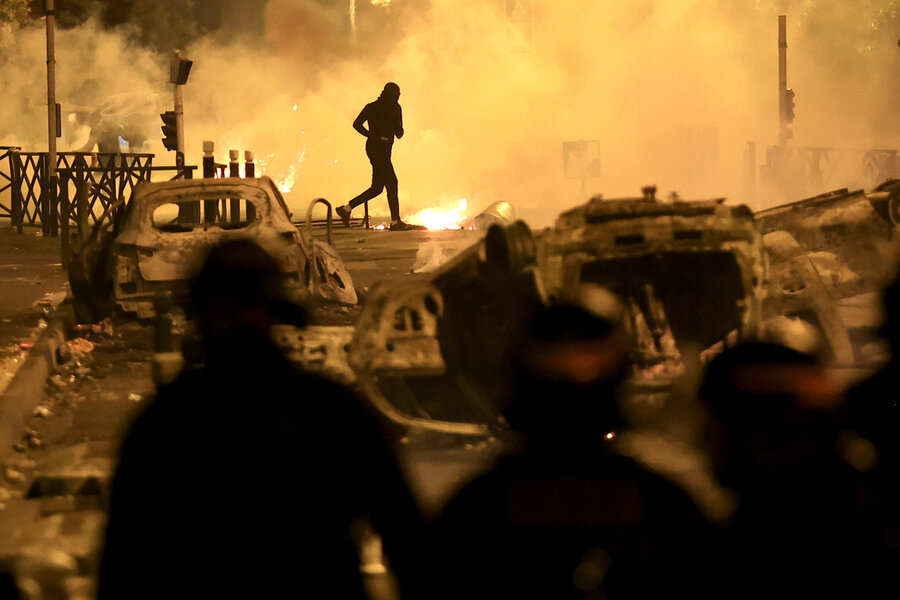Post-riots, France looks at left-behind youth
Loading...
The riots that swept across France following the police killing of a teenager of Arab descent last week in a Paris suburb renewed long-standing concerns about racism in law enforcement. But as the unrest subsides, French society is grappling with a perhaps more unsettling question: Why would children as young as 12 years old participate in frenzies of destructive violence?
At least 3,354 people were arrested during six days of rioting. Their average age is 17, the government reported. That is prompting soul-searching among local officials, teachers, parents, religious leaders, and organizers of community initiatives for youth. The violence requires more than policy solutions, “but also the human [touch],” as one mayor, Anne Vignot, mayor of Besançon, said – starting with empathy.
“If we’re going to get out of this situation,” Mounira Chatti, a professor at Bordeaux Montaigne University, told the Monitor, “the government needs to send a very strong signal to young people from immigrant backgrounds: You belong to this country; you have your place here.”
The “situation” that Professor Chatti notes is well studied. Immigrants, mostly of North African origin, make up 10% of the French population. The share is even larger when French-born descendants of immigrants are counted. They are concentrated in crowded, low-income suburban communities called banlieues, where public services and opportunities for economic advancement lag far behind the national average.
Roughly 57% of children in these communities live in poverty, compared with 21% in the broader French population, according to the Paris-based Montaigne Institute, and residents are three times more likely to be unemployed.
Social and economic inequality is compounded by what Human Rights Watch has described as “longstanding and widespread ethnic profiling that constitutes systemic discrimination” by the police. The riots last week were touched off by an incident critics say is all too frequent: police harassment of youth on the basis of race or ethnicity.
Those conditions mask a positive trend, however. According to official statistics, roughly 10% of banlieue residents relocate to better communities each year. While that sliver of upward mobility does not undo the need for greater investment in communities of poor immigrants, it points to the social adhesive many are seeking to renew amid the youth crisis reflected in the riots.
“It’s the combined and blended words of just about everyone: the teacher, the activity leader, the imam, the father, the mother, a multitude of players,” Youcef Achmaoui, the imam of Garges-lès-Gonesse, a community in the north of Paris, told Le Monde newspaper. “That’s what makes [youth] think things over.”







